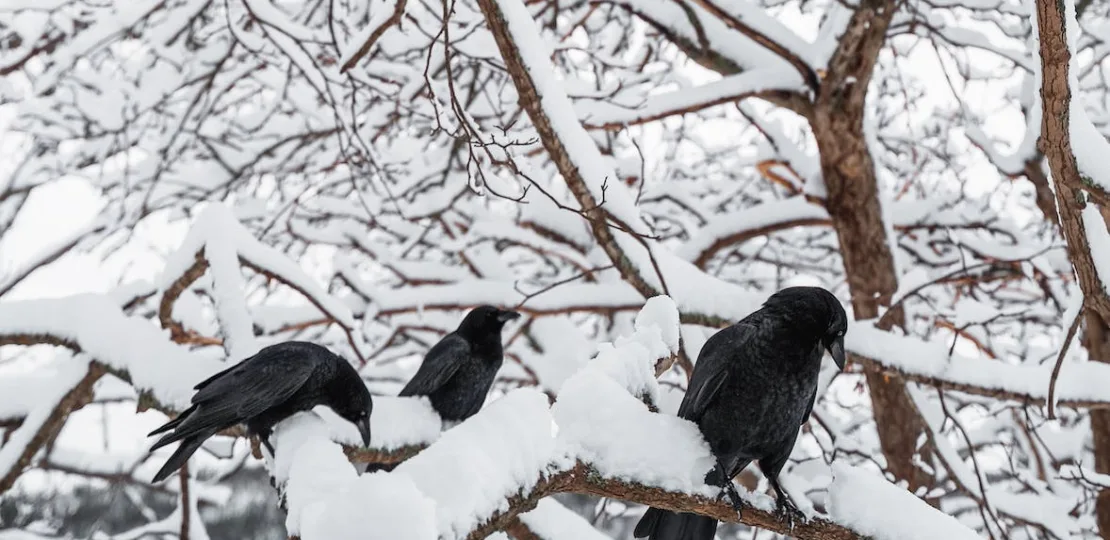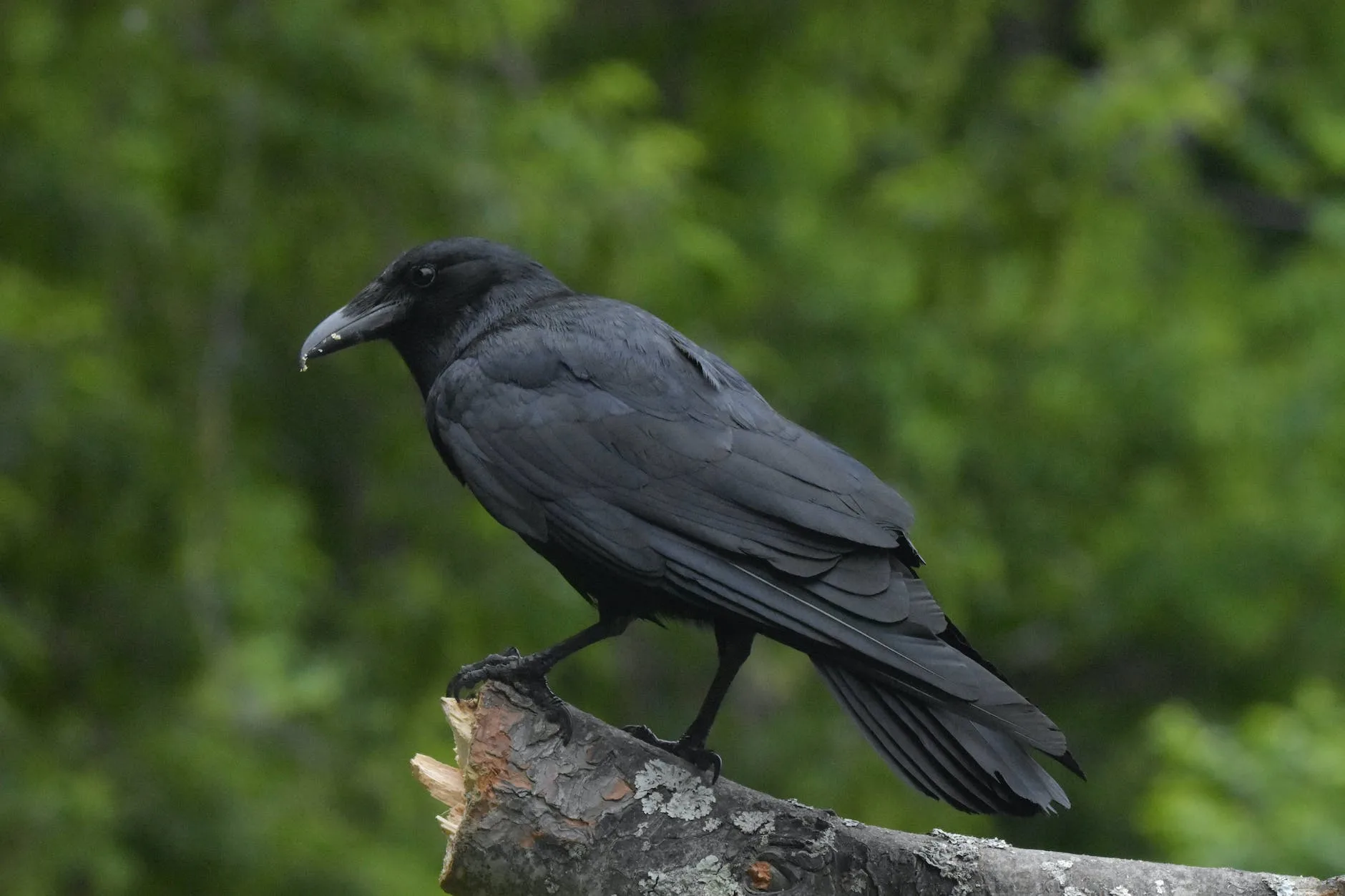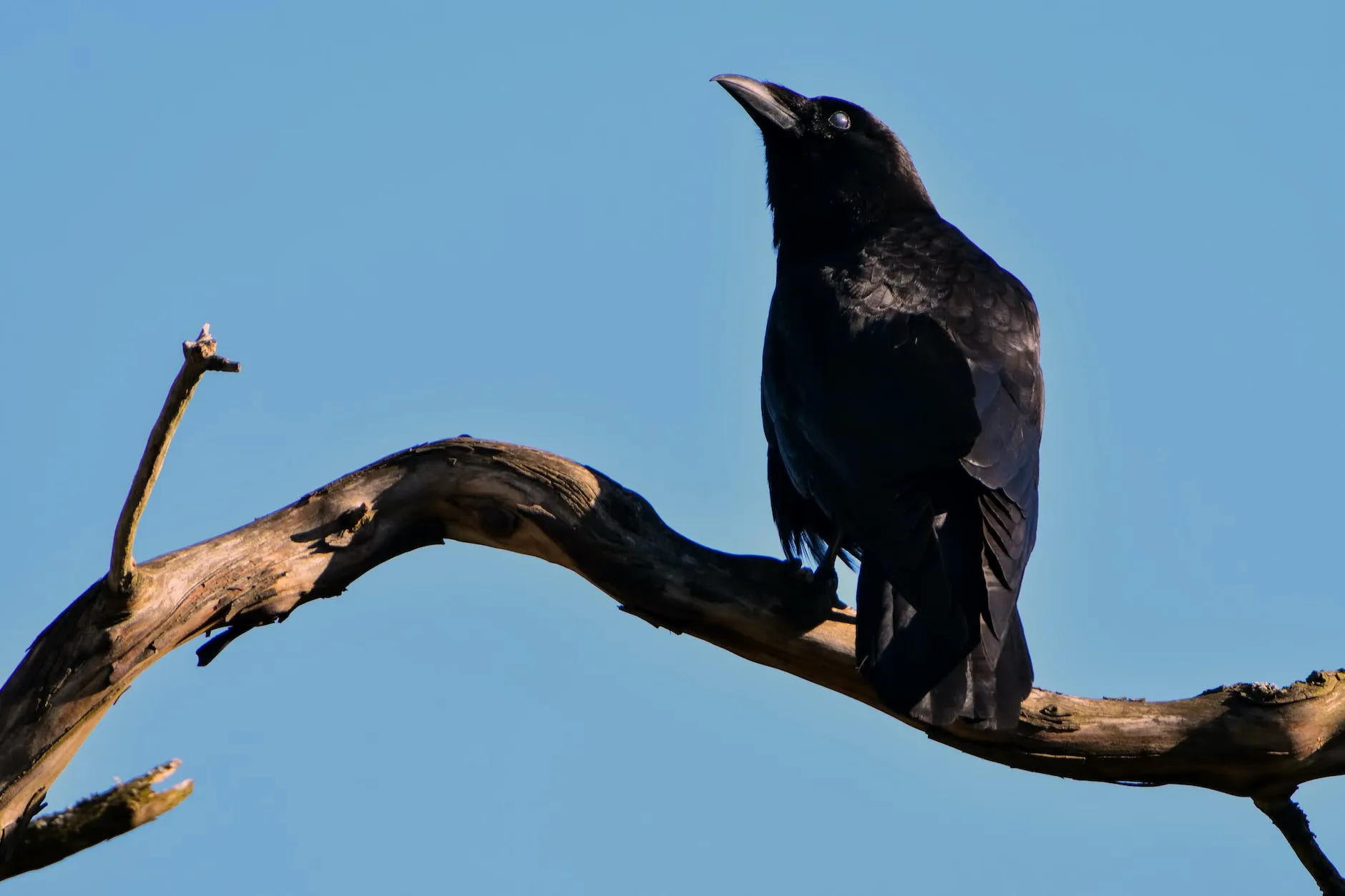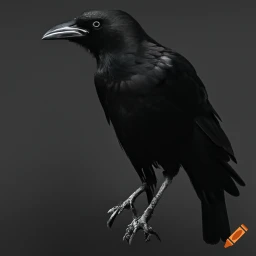Untangling the Mystery: Understanding the Western Jackdaw (Corvus monedula)
December 30, 2023 | by BlackCrow.com

The Western Jackdaw: A Fascinating Black Crow
Introduction to the Western Jackdaw
The Western Jackdaw (Corvus monedula) is a captivating member of the crow family, known for its distinctive appearance and intriguing behavior. Found across Europe, Asia, and North Africa, these intelligent birds have piqued the interest of bird enthusiasts and researchers alike. In this section, we will explore the unique characteristics and behaviors of the Western Jackdaw.
Physical Characteristics of the Western Jackdaw
The Western Jackdaw is a medium-sized bird, measuring approximately 34-39 centimeters (13-15 inches) in length. It has a sleek black plumage, with a contrasting gray nape and a distinctive pale eye. Their beak is short and stout, adapted for a variety of foraging behaviors.
One of the key physical features of the Western Jackdaw is its striking pale gray eyes. This characteristic sets it apart from other members of the crow family, which typically have darker eyes. The eyes of the Western Jackdaw are known to exhibit a high degree of individual variation, with some birds having lighter-colored eyes than others.
Distribution and Habitat
The Western Jackdaw has a vast distribution range, spanning across Europe, Asia, and North Africa. They can be found in diverse habitats, including woodlands, farmlands, urban areas, and coastal regions. These adaptable birds have successfully adapted to human-altered landscapes, often nesting in chimneys, buildings, and tree cavities.
In Europe, the Western Jackdaw is a common sight, often seen in large flocks that gather in open fields or roost in trees. They are known for their gregarious nature and are frequently seen socializing and foraging together. Their ability to thrive in a wide range of habitats contributes to their widespread distribution.
Understanding the physical characteristics, distribution, and habitat preferences of the Western Jackdaw is crucial for appreciating and conserving these fascinating birds. In the next sections, we will delve deeper into their behavior, social structure, diet, and conservation status.
Behavior and Social Structure
Understanding the behavior and social structure of the Western Jackdaw (Corvus monedula) provides insight into the fascinating lives of these intelligent birds.
Social Behavior of Western Jackdaws
Western Jackdaws are highly social birds and can often be found in large flocks, known as roosts. These roosts can consist of hundreds or even thousands of individuals. Within these flocks, Western Jackdaws engage in various social interactions, such as grooming, playing, and vocalizing.
One notable behavior of Western Jackdaws is their affinity for shiny objects. They are known to collect and hoard small, shiny items like coins or pieces of jewelry, which they may use as part of their courtship displays or to establish dominance within the flock.
Communication and Vocalizations
Western Jackdaws are vocal birds, using a range of calls and vocalizations to communicate with each other. These vocalizations serve various purposes, including maintaining contact within the flock, warning of potential dangers, and reinforcing social bonds.
Their calls can be described as a mix of caws, rattles, and chattering sounds. Different vocalizations are used in different contexts, such as during courtship, territorial disputes, or when alerting others to the presence of predators. These vocalizations are an important means of communication for Western Jackdaws.
Nesting and Breeding Habits
Western Jackdaws are monogamous birds, forming long-term pair bonds with their mates. They exhibit strong site fidelity, often returning to the same nesting site year after year. These nesting sites are typically located in cavities, such as tree hollows, crevices in cliffs, or even man-made structures like buildings or chimneys.
Both male and female Western Jackdaws participate in nest building, which involves collecting twigs, grass, and other materials to construct a cup-shaped nest. The female lays a clutch of 4-6 eggs, which she incubates for about 16-18 days. Both parents take turns incubating the eggs and caring for the hatchlings.
Once the chicks hatch, they are cared for by both parents, who provide them with food and protection. After about 30-35 days, the young Western Jackdaws fledge and leave the nest, but they continue to remain dependent on their parents for several weeks as they learn to forage and navigate the world.
Understanding the behavior and social structure of Western Jackdaws provides a glimpse into their intricate lives and the ways in which they interact with their environment and fellow flock members. Their social behaviors, vocalizations, and nesting habits contribute to the unique and captivating nature of these birds.
Diet and Feeding Habits
Understanding the diet and feeding habits of the Western Jackdaw (Corvus monedula) can provide insight into the ecological role and behavior of these fascinating birds.
Preferred Foods of Western Jackdaws
Western Jackdaws have an omnivorous diet, meaning they consume a variety of plant and animal matter. Their diet primarily consists of:
-
Invertebrates: Western Jackdaws feed on a wide range of invertebrates, including insects, earthworms, spiders, and beetles. They forage on the ground and probe into the soil to uncover hidden prey.
-
Seeds and Grains: These birds also consume seeds and grains, such as cereals, maize, and sunflower seeds. They are known to visit agricultural fields and feed on spilled grains or crops.
-
Fruits and Berries: Western Jackdaws have a fondness for fruits and berries, particularly those that are soft and easily accessible. They may feed on apples, cherries, blackberries, and elderberries when available.
-
Small Vertebrates: Although less common, Western Jackdaws occasionally prey on small vertebrates like mice, voles, and nestling birds. They may scavenge on carrion as well.
-
Human Food Sources: These adaptable birds are also known to take advantage of human food sources, such as garbage dumps, picnic areas, and bird feeders. They can be opportunistic feeders and quickly adapt to urban environments.
Foraging Techniques and Adaptations
Western Jackdaws employ various foraging techniques to obtain their food. They are agile birds and exhibit the following adaptations:
-
Ground Foraging: Western Jackdaws often forage on the ground, searching for insects, worms, and fallen seeds. They use their sharp beaks to probe the soil or leaf litter, extracting hidden prey.
-
Tree Foraging: These birds are skilled at searching for insects and their larvae in tree bark crevices. They may use their beaks to pry into the bark or use their claws to cling onto branches while searching for food.
-
Scavenging: Western Jackdaws are opportunistic scavengers and readily feed on carrion or food scraps. Their intelligence and adaptability allow them to exploit human-related food sources, increasing their survival and reproductive success in urban areas.
-
Group Foraging: Western Jackdaws often forage in groups, known as flocks or rooks. Foraging in groups provides safety in numbers and allows them to efficiently locate and exploit food resources. They may communicate with each other through calls and visual cues to coordinate foraging activities.
Understanding the diet and foraging behavior of Western Jackdaws is essential for assessing their ecological impact and conservation needs. These adaptable birds play a valuable role in the ecosystem by controlling insect populations and dispersing seeds. By adapting to various food sources and habitats, Western Jackdaws have successfully expanded their range and adapted to human-altered landscapes.
Conservation Status and Threats
The Western Jackdaw, scientifically known as Corvus monedula, is a species of crow that has a relatively stable conservation status. However, it is important to monitor their population and address potential threats to ensure their long-term survival.
Current Conservation Status
The current conservation status of the Western Jackdaw is assessed as “Least Concern” by the International Union for Conservation of Nature (IUCN). This designation implies that the species is not currently facing significant population declines or imminent threats.
Threats to Western Jackdaws
While the Western Jackdaw population is relatively stable, there are still potential threats that could impact their numbers in the future. Some of the threats to Western Jackdaws include:
-
Habitat Loss: The destruction and fragmentation of suitable habitats, such as woodlands and open fields, can limit the availability of nesting sites and food sources for Western Jackdaws.
-
Agricultural Intensification: Changes in agricultural practices, such as the conversion of grasslands to intensive farming or the use of pesticides, can reduce the availability of insects and other invertebrates that the Western Jackdaw relies on for food.
-
Urbanization: The expansion of urban areas can lead to the loss of natural habitats and nesting sites for Western Jackdaws. However, these adaptable birds have also found ways to thrive in urban environments by utilizing buildings and structures for nesting.
-
Climate Change: Changes in climate patterns, such as shifts in temperature and precipitation, can impact the availability of food resources for Western Jackdaws. Additionally, extreme weather events, such as storms and heatwaves, can directly affect nesting success and survival rates.
Conservation Efforts and Future Outlook
Despite the current stable conservation status of the Western Jackdaw, ongoing conservation efforts are essential to ensure their long-term survival. Some of the key conservation actions that can be undertaken include:
-
Habitat Protection: Conserving and protecting natural habitats, such as woodlands and grasslands, is crucial for providing suitable nesting sites and food resources for Western Jackdaws.
-
Environmental Education: Raising awareness about the importance of Western Jackdaws and their ecological role can help foster a sense of stewardship among local communities and encourage conservation efforts.
-
Research and Monitoring: Continued research and monitoring of Western Jackdaw populations can provide valuable insights into their behavior, population trends, and potential threats. This information can guide conservation strategies and help identify priority areas for protection.
By addressing the potential threats to Western Jackdaws and implementing conservation measures, we can contribute to the long-term conservation of this fascinating species. It is important to recognize the value of the Western Jackdaw in our ecosystems and work towards ensuring their continued presence for future generations to appreciate.
RELATED POSTS
View all


